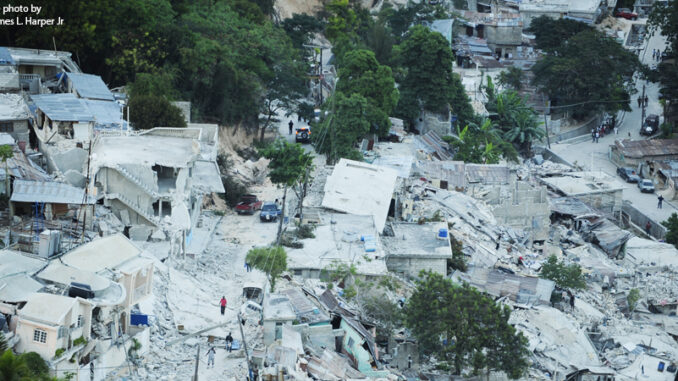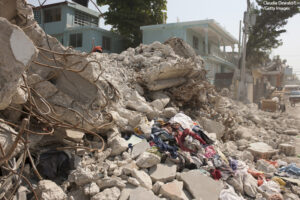
In the wake of the assassination of President Jovenel Moise on July 7, 2021, the Caribbean island nation of Haiti has faced political instability and widespread gang violence. Then on August 14, 2021, Haiti–the poorest nation in the Western Hemisphere–faced an even bigger challenge when it was hit by the deadliest earthquake in more than a decade. This was followed almost immediately by a severe tropical storm that caused even more destruction and slowed humanitarian relief efforts.
A Devastating Quake…
On the early morning of Saturday, August 14, 2021, Haiti was hit by a 7.2-magnitude earthquake that has so far killed more than 2,200 people and injured 12,000 more. Thousands of buildings were leveled, including schools and hospitals. An estimated 53,000 houses were destroyed. In some places, more than half of all homes are gone. The quake also contaminated the local water supply. And sheltering people is even more difficult as officials try to limit residents’ exposure to COVID-19. Because hospitals were leveled by the quake, many injured Haitians were forced to wait for medical help outside or in tents or other makeshift shelters. Haiti’s civil protection agency urged people whose homes were spared by the earthquake to shelter their friends and neighbors if possible.
The death toll could have been far higher. The earthquake hit in the southwestern part of the country, in a sparsely populated region. By comparison, when Haiti’s capital of Port-au-Prince experienced a serious earthquake in 2010, about 200,000 people died.
…And a Tropical Storm
Two days after the quake Tropical Storm Grace arrived, bringing heavy rain, flash flooding, and mudslides. Though Grace was downgraded to a tropical depression, it quickly regained its tropical storm status. Rainfall of up to fifteen inches was measured in some places. The extreme weather also made earthquake relief efforts more difficult. Hospital workers, for example, were forced to relocate patients from makeshift shelters by cramming them tightly into hallways, corridors, and other enclosed spaces. Haitians often had to make difficult choices about whether to leave the flimsy shelters they had built out of tarps and sheets, to re-enter structures that were damaged by the quake and likely to be unstable.
Several countries, including the United States, have sent humanitarian aid in the form of workers and supplies, as well as equipment such as planes and helicopters. The U.S. Southern Command is supporting the U.S. Agency for International Development (USAID) to provide help requested by the Haitian government. Coast Guard ships are off shore of the island to receive the seriously wounded who are being evacuated by U.S. piloted helicopters. The U.S. Navy is also taking aerial images of the earthquake destruction to aid in assessing damage and provide relief where it is most needed.
USAID is sending in a Disaster Assistance Response Team (DART) to help Haiti recover. The DART team is leading search and rescue efforts to find people trapped in the earthquake rubble. They are also prioritizing aid to go to the worst affected areas of Haiti first.

